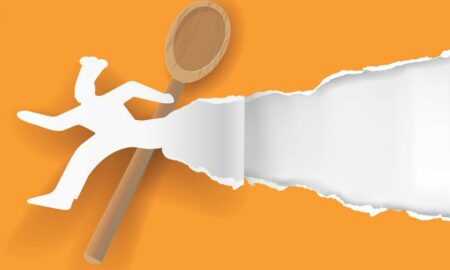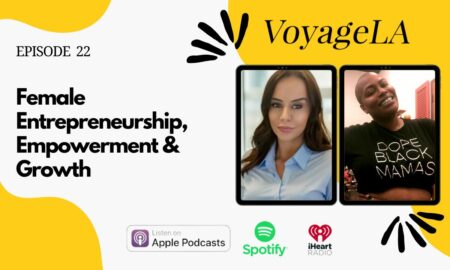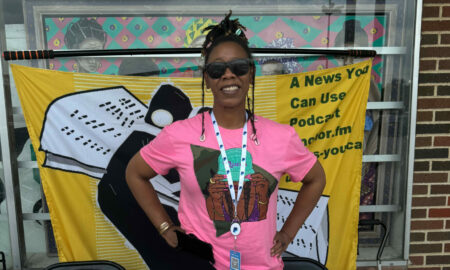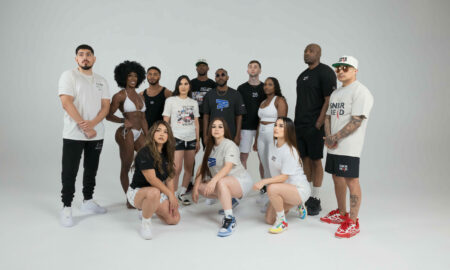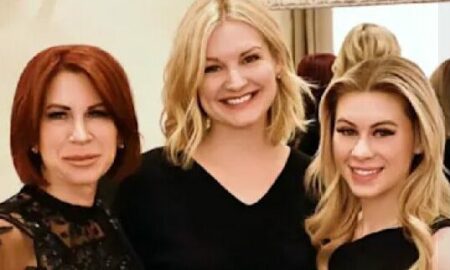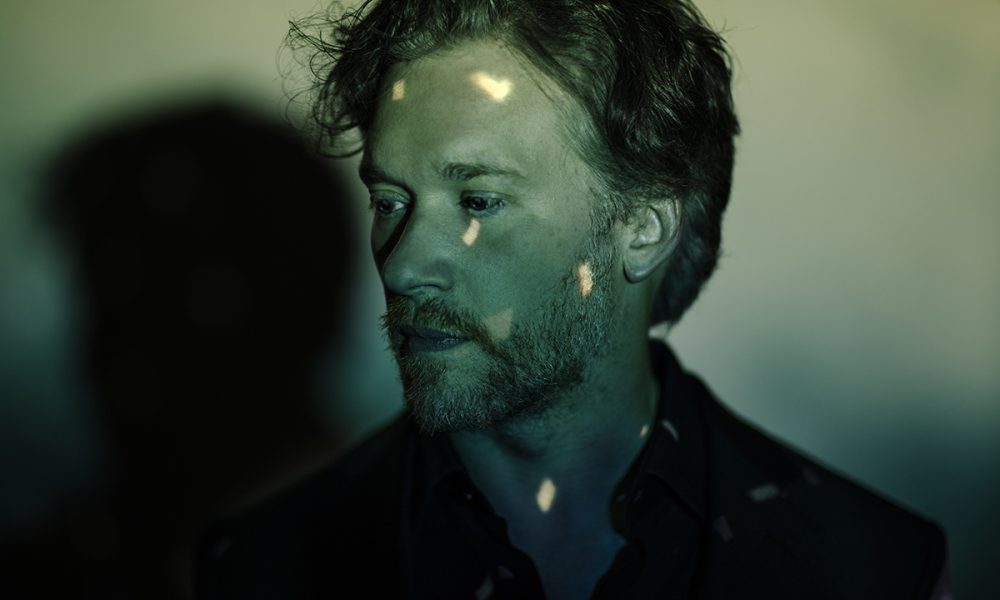

Today we’d like to introduce you to Mark Cuthbertson of the band Fantasticboom.
Mark, let’s start with your story. We’d love to hear how you got started and how the journey has been so far.
I was a full-time musician, playing guitar in other people’s projects for a living. But somewhere during the early stages of that career, I decided that I’d rather make a living teaching philosophy of science and philosophy of religion. As enamored as I’d become with reading dead people, I was more preoccupied with keeping up with the contemporary scene. The second half of the 20th century had been a fertile period in both of those areas of philosophy, and I wanted to be a part of the 21st century’s chapter. Bas Van Fraassen, Alvin Plantinga and other contemporary figures loomed large in my thought. I went to, and presented at, theological and philosophical society meetings, and am still a member of the Philosophy of Science Association. Sometime during my masters, I was published on (deep breath) the bivalence of future tense propositions and its relationship to options within philosophy of time and to the concept of divine foreknowledge, a topic that is exactly as exciting as it sounds.
All the while, I was playing guitar to put myself through grad school. Somehow it had become my “fallback” job: that thing I relied on to survive. Yet when it came time to interview with a particular Ph.D. program, I was told that I’d be given my stipend in exchange for not holding a job. I knew that they’d ESPECIALLY hold a pro musician to that rule…late nights, and all. At the same time, I’d finally started to love music again. Doing music as commerce can have the well-known effect of taking the joy out of playing. But at long last, my first love was reemerging, thanks in no small part to a renewed love of LISTENING to music, especially modern indie rock…Radiohead, Deerhunter, Broken Social Scene, and the like. I knew I wanted my own project, and that maybe it could be the union of both my aesthetic and my philosophical goals. That project is Fantasticboom (named after something of absolutely zero importance in 101 Dalmations), and this first album is How to Build a Hole.
Overall, has it been relatively smooth? If not, what were some of the struggles along the way?
It certainly hasn’t been easy, artistically. Most musicians are flush with ideas. But I’ve always been drawn toward the ones who are the LEAST prolific, the ones who probably release only their best stuff. I suspect they’re relentless self-editors. That’s what I tried to be.
For example, I certainly don’t consider myself to be a great lyricist. A great lyricist could generate their product much faster than I seem to be able to. But I was willing to wait–sometimes years–until I had a lyric that was perfect…well, maybe not PERFECT, but reflective of who I am, was something I wanted to say, and was cast in language I’d use.
Similarly, as committed as I was to using idiosyncratic sounds on this album, I didn’t want to fall into the common trap of having clever production conceal the lack of a quality song. So rather than start with odd sounds and then add chords, melody and lyrics, all of the songs were first written as if I were doing a singer/songwriter album: just acoustic guitar and voice. I made sure that each was just a great song at its core. After that, I proceeded to re-record each in a new tonal palette, with as few guitars as I could muster. For a former full-time guitarist, it’s interesting that the sound of a recognizable guitar doesn’t occur until almost six minutes into the album…literally the bridge of the second track. But that process–writing stripped-down songs and then searching for novel tones in which to recast them–took more work than I’d imagined.
But Art is hard. And most people are dead. We only remember the ones who did something hard. Might as well aim for that.
What is it that is unique about Fantasticboom?
I suppose Fantasticboom is marked (or marred) by a few idiosyncrasies.
Lyrically, it’s stuff that hurts in the language I know best. The death of Blaise Pascal makes an appearance when describing my failure at a relationship that meant the world to me. An essay about the shattering of one’s worldview pauses at Parmenides before ending in an old Lutheran mantra. The two big-picture excursions into my entire moral worldview also contain my most specific and embarrassing personal admissions. The album ends with a reflection on sin (my own) and a retelling–an exclamation–of the opening of the Westminster Shorter Catechism. It’s a very ME album, and that’s fine. Let it be divisive. I don’t want someone to think it’s just okay. I’d rather people love or hate it.
Sonically, I wanted to consistently provoke the “how did you get that sound?” response. There are innumerable oddities, but they’re all LISTENABLE and tonal…they’re notes, not noises. I’d be thrilled to narrate the sounds of each song. Track 1, alone, would take an afternoon…for starters, it’s a palindrome with track 2. Throughout the process, Talk Talk’s last two albums were a definite inspiration. In fact, the first sound that made the album was an impossibly random series of blips that made me think of Spirit of Eden. I knew at that moment that I had my proof of concept, that I could, with enough searching, find enough novel sounds to fill the entire album I envisioned. But to get away with all of those colors, the foundation had to be tonal simplicity: Bucky Wheaton on a regular old drum kit and me on a Fender P Bass. Simplicity! But it allows for the constellation of tones going on above. There are also themes that pass from one song to the next. In fact, most of the album flows as a single song. That took work, but it’s because, in the age of singles and EPs, I still love the ALBUM as a format. The only time there’s a noticeable pause is prior to the final track, as if it say, “okay, this next thing is important.”
The live performances make very little attempt to recreate the album. Many of the sounds on the album couldn’t happen again even if I remembered how they were done. Of the several shows the live band has done so far, we’ve changed things every time. My guitar parts are almost completely improvised the entire night. We’re not interested in doing what the audience could listen to at home…I almost resent that when other bands do it, particularly when they play along with tracks.
Any shoutouts? Who else deserves credit in this story – who has played a meaningful role?
Jace Lasek (The Besnard Lakes, and producer of Wolf Parade, Suuns, and others) was my co-producer when in Montreal. I went to Montreal several times when, to regain my sanity and let some creative “light” into the room, I would cede control of the project for a while. Jace has made multiple albums that are touchstones for me, and he was not only a source of ideas but also one of restraint when I needed it. Additionally, there were times I’d have some potentially hazardous idea for how to make a sound–the kind of idea that, if I were home in Dallas, might only get written in a notebook rather than actually being attempted–and as soon as I mentioned it, Jace was setting up for it. He was the perfect facilitator of my terrible ideas and a wellspring of much better ones. Just as importantly, he was interminably patient with me while he mixed the album.
Bucky Wheaton (Land of Talk) played drums magnificently on the album. My friend Jack Sargent added production to the song “this”. Jesse Chandler (Mercury Rev, Midlake) played winds and piano on the album’s final track. Two of my favorite vocalists, Ivy Nadine and Krista Miller, appear here and there. Out of the enormous tapestry of sounds, there’s a contribution each from a fantastic keys player named Josh Hanlon, another named Darwin Martin (who stepped in to play a part I knew I wanted but kept failing to execute), vocalist Amy Thornhill, a recluse named Evan Jacobs, violinist Marian Brackney, Dallas pedal steel legend Mitchell Smithey, a young keys player named Josh Ortiz, and a duo named Silverio Salazar and Jacob Horton who are fearless ultra-creatives. The wonderful Belgian musician, Jürgen Augusteyns, did the layout on top of Anton Semenov’s stunning artwork.
Brad Barr of The Barr Brothers loaned me his 50’s Gibson J45 for the track “How to Build a Hole” (it is mirrored by my 60’s one). Ronin Guitars and Lentz Guitars kept me stocked, as did J Rockett Audio pedals. A fellow named Rich Myers was immeasurably supportive with advice and then some. And a friend, Stephane Claveau, freely loaned his gear, guest room and ECM discography while I was in Montreal.
There were many more who lent me their ears when I couldn’t hear straight. And that community was the most valuable contribution of all. That’s probably true in any career a person chooses, whether their first choice or second…or back to their first again.
Contact Info:
- Website: www.fantasticboom.com
- Email: info@fantasticboom.com
- Instagram: https://www.instagram.com/_fantasticboom/
- Facebook: https://www.facebook.com/fantasticboomofficial/
- Twitter: https://twitter.com/_Fantasticboom
- Other: https://open.spotify.com/artist/3lQ5GEDKC4efSaJGIIccjD?si=Pu6PgdOkQFapZfS3USSSxw




 Image Credit:
Image Credit:
Photos: Paxton Maroney
Album Cover: Anton Semenov
Suggest a story: VoyageDallas is built on recommendations from the community; it’s how we uncover hidden gems, so if you or someone you know deserves recognition please let us know here.



